Back in the day, you had two choices: paper or wood shavings for your pet piggy’s bedding. But new crazes in pet care are popping up every week, it seems, and some of them are long overdue.
Fleece bedding and liners are just such a craze exploding on the small pet scene and for plenty of good reasons. Not only can they make your guinea pig’s cage look ultra chic or uber cute depending on the fleece pattern. They also have a score of benefits that could improve your piggy’s comfort. And even their health, believe it or not.
Whether you have a single full-sized guinea pig or several, fleece liners seem to be the way to go. Let’s jump right in on how to set up a guinea pig cage with fleece and why you should.
How does fleece bedding work?
If you’re a guinea pig parent, you should know by now that there are various types of bedding available for your furball. And if you’re in the process of preparing for your new addition to the family, here’s your crash course in bedding types.
Paper bedding or wood shavings are a common type of bedding used by piggy owners because they’re both easy to throw out and replace with a fresh, clean supply. But fleece cage liners are the latest craze in guinea pig bedding, thanks to their eco-friendly nature.
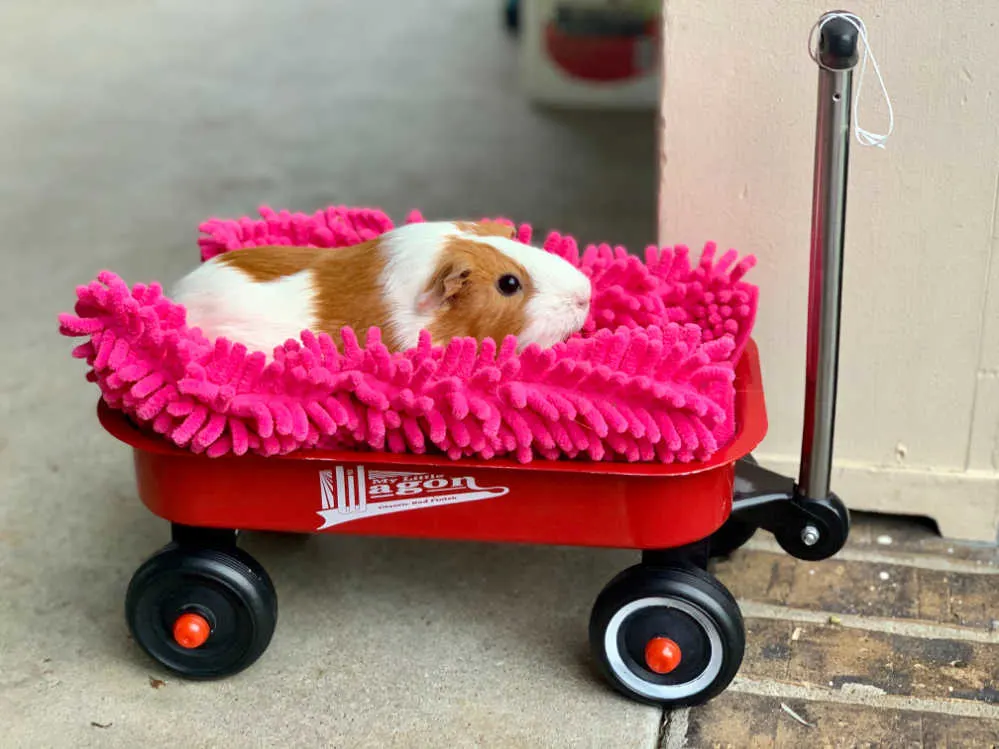
There are those who have simply popped in one layer of fleece and called it a day, but this isn’t how to go about fleece bedding. Not only is it improperly prepared, but a single layer of fleece also isn’t enough to keep your pet dry or clean — you’ll just end up with a soggy mass of material in your cage. Not only is it unhealthy for your home, but it’s also unhealthy for your guinea pig and can lead to health issues and costly vet bills.
Instead, proper fleece bedding is typically sold as cage liners. The top layer is always a cozy fleece, and depending on what type of liner you get, the layers beneath will alternate between an absorbent layer or a waterproof layer.
This is because fleece doesn’t retain moisture, so the wetness soaks through and ends up in the absorbent material on the bottom. Ideally, the fleece layer should completely cover the underneath layers to keep your piggy’s feet dry and clean. The fleece should also be a good quality.
Is fleece bedding a good choice?
You might be wondering at this point if fleece bedding is a good choice for you. It may sound good in theory, but perhaps paper and wood shavings are what you feel most familiar with. Well, here’s the scoop on the pros and cons of fleece bedding and why, in the end, it is one of the best ways you can spoil your pet guinea pig.
Pros of fleece bedding
Unlike wood shaving and paper bedding, fleece liners are washable and reusable. As long as it is correctly prepared before use, it’s pretty easy to keep clean. All that’s required is some spot cleaning over the week and then tossing it in the washing machine on the weekend for a good, thorough cleaning.
Fleece is also gentle on your piggy’s little feet. These sweet furries have delicate toes, and are prone to a foot disease called bumblefoot or “sore hocks” that can spring from many sources. Diet, bedding type, or even poor grooming can lead to this painful condition, meaning a softer place to walk will be appreciated by your piggy.
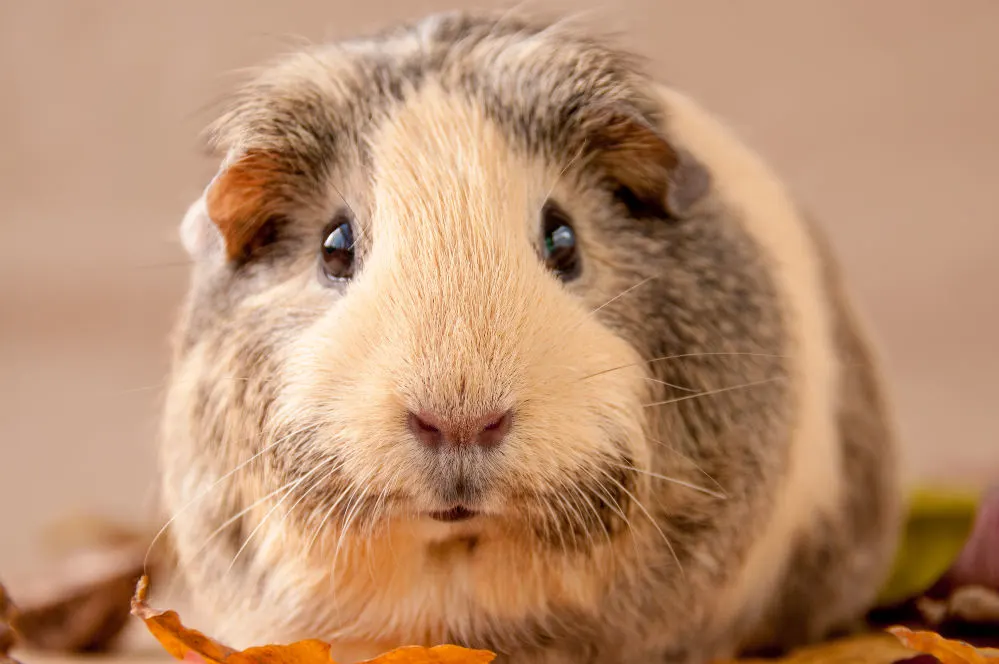
Fleece is also more hygienic provided it’s cleaned regularly, as the fabric tends to naturally eliminate bad odors. It also doesn’t collect dust like paper and wood do, so your guinea pig is less likely to suffer from allergies or respiratory issues.
No surprise here, but fleece is also environmentally friendly. There’s virtually no waste as it tends to last a couple of years if maintained well, and you can wash it by hand and hang it up to dry.
These fluffy liners are also cheaper on the wallet over time, and who doesn’t like to save a bit of money? Pets can get expensive, after all, and you could rather spend that extra money on their food or chew toys than on bedding you’re literally throwing in the bin.
Not only is fleece comfy to snuggle in, but it also won’t snag in your guinea pig’s fur like wood shavings do. This means less brushing and grooming for you to do and less discomfort for your pet.
Last but not least, fleece is fashionable! That means it’s easy to find the perfect fleece liner for your cage and piggy’s needs, especially on sites like Etsy.
Cons of fleece bedding
One of the biggest cons is that fleece liners can get a bit expensive upfront — you can spend anything from $50 – $100 on average. But bear in mind that you are paying for something durable that’s going to last years. So when compared to how much you’d end up spending on constant traditional bedding refills, you end up saving quite a lot in the long run.
There is also a little extra cost involved with the cleaning. More washing equals a higher utility bill from using more water, after all. Not to mention you’ll have to buy a special laundry detergent for the fleece fabric.
Another con is being consistent with spot cleaning. If you’re unfamiliar with the term, it refers to picking out any poops and bits of hay from your guinea pig’s cage, as well as changing any wet bits of fleece. It’ll have to be on a daily basis – after all, guinea pigs do seem to poop a lot – and not all guinea pig owners have the type of schedule that allows for this routine everyday chore.
What types of fleece liners are there?
As it turns out, there isn’t one ubiquitous type of fleece liner available on the market but several. There are however three main types of liners:
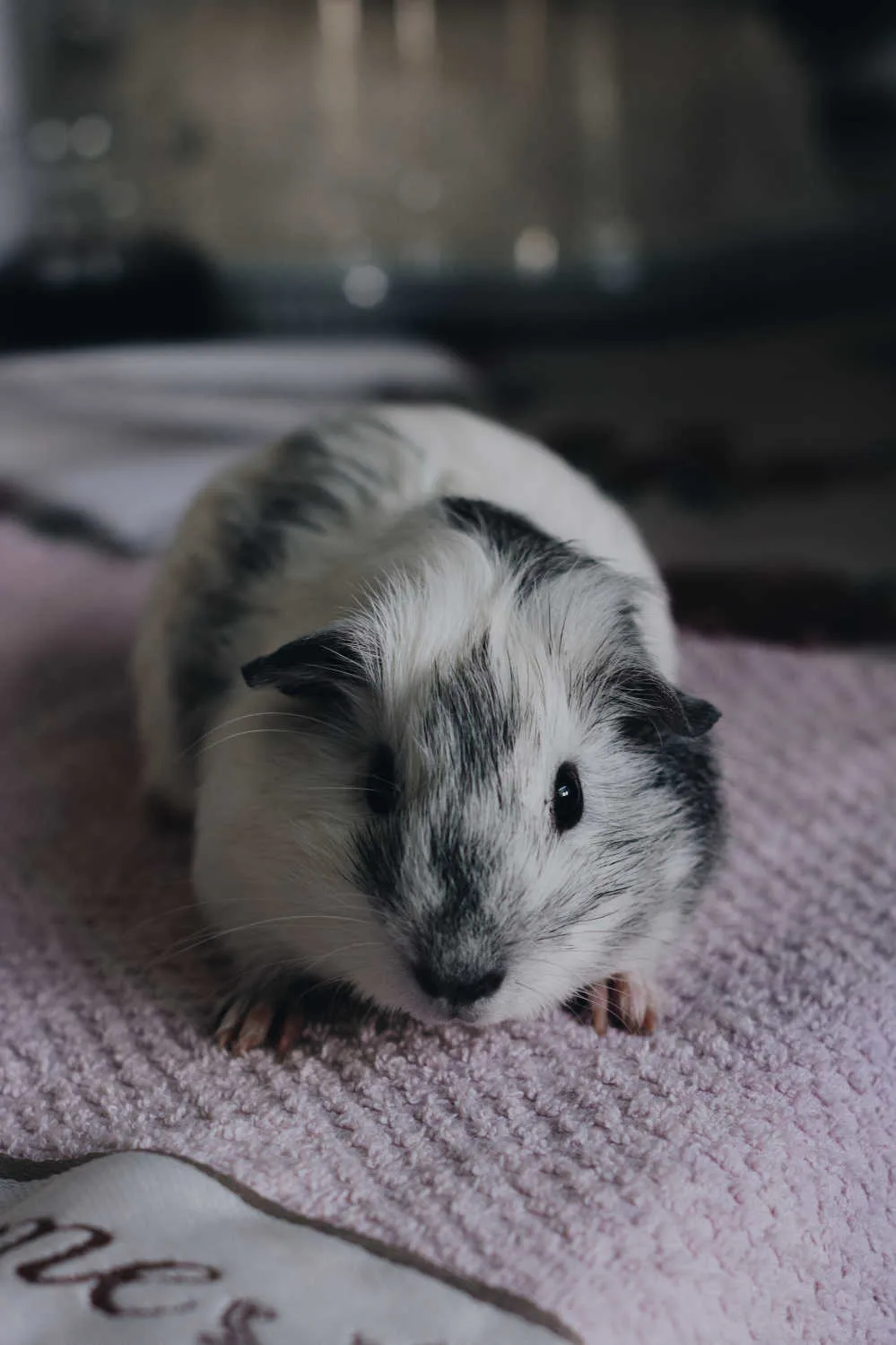
Padded fleece liners
Several layers and different materials make up a padded fleece liner. The top and bottom layer are soft, comfortable fleece, while the middle layer is an absorbent material to soak up your piggy’s urine.
This means the mess is stored in the center of the liner rather than at the bottom. While they do trap liquids quite effectively, they’re not completely waterproof and small leaks may make it to the bottom of the cage. They tend to be on the thicker side, making them super comfortable for your pet to walk on and snuggle into.
Waterproof fleece liners
These liners are thinner than the padded variety, with a layer of fleece on top and a waterproof material lining on the bottom. They may be more efficient when it comes to keeping the cage clean, but they can be harder to wash in the long run.
This is due to the fact that you can only really wash it from one side instead of being able to let water and soap run right through it and flush it out. They also tend to start revealing a smell more quickly than airy padded liners when they’re in the cage, as the waterproof layer doesn’t absorb but rather collects moisture on top.
Custom Liners
Because there are crafters aplenty who understand the needs of these adorable furballs, there are other types of liners available that are different from the standard two options. Often they’re created by guinea pig owners who want the best for their (and your) pet, so the liners can be more thoughtfully constructed.
A good example is a liner that has a comfy moisture-wicking fleece layer on top, a thick absorbent layer beneath it, and a waterproof layer on the bottom to keep little feet dry. This type of liner is a combination of the two desirable aspects of padded and waterproof liners, making them an attractive option.
How to set up fleece bedding in my guinea pig cage?
Fleece liners can have different sizes and dimensions, with some being designed for specific cage brands and others being more generic in proportions to suit any cage you have. The C&C cage range is a popular make, and many liners are made specifically to fit their dimensions.
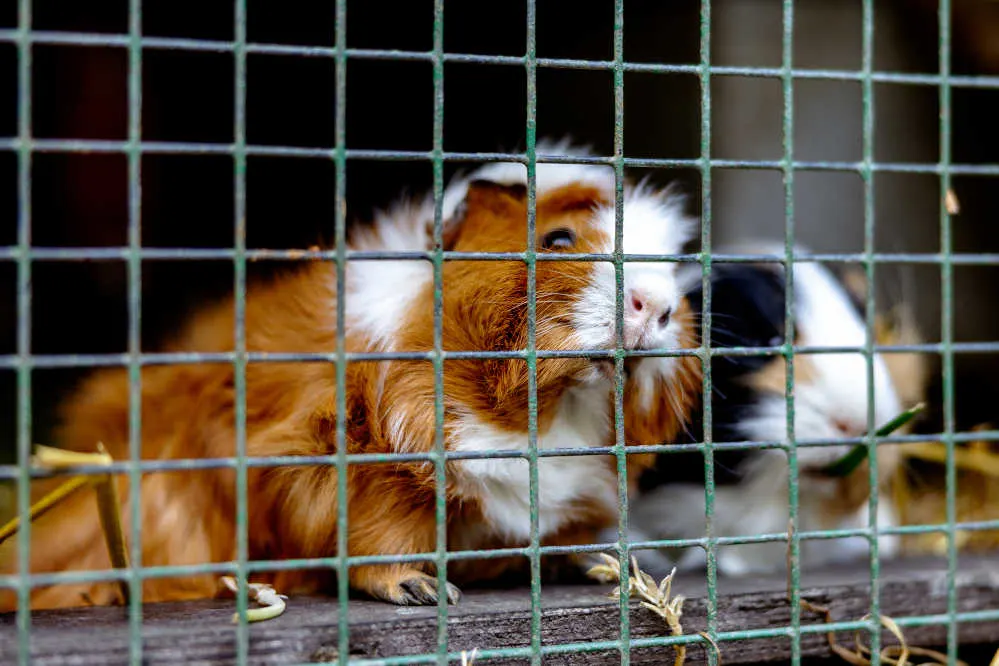
Marketed liners like this one come in sizes ranging from 24 x 47 inches (61 x 119.4 cm) to 27 x 41 inches (68.6 x 104.1 cm) and 27 x 56 inches (68.6 x 142.2 cm). You simply buy as many as you need to fit your cage.
If you shop around on Etsy, though, sellers often have custom sizes that may fit larger areas. With some shops, you may even be able to request a precise size to match your cage.
How to prepare fleece bedding
This is important because how you prepare the fleece before use will determine the longevity of your bedding. Before they go anywhere near your precious piggy, they need to be washed in hot water a few times.
This is to remove any coatings or potential water-repellant treatment on the material and improve its overall wicking abilities. This will result in a fleece bedding that quickly dispels urine to the absorbent layer and will be less likely to get smelly.
If you’re not sure if your fleece is ready, test it by dripping some water onto it — the water should soak through within seconds. If it does, it’s ready to be used by your perky pet.
How to clean fleece bedding
Cleaning fleece bedding can be a little bit of a chore, but once you get the hang of it, you’ll find it’s not so time-consuming. The first step is to pick off any remaining pieces of hay or piggy poop before you throw it into the washing machine. You should use a laundry bag to keep your washer clean and fuzz-free.
The next step is to use a gentle cleaning agent that’s odorless dyeless and suitable for sensitive skin, as the delicate noses of guinea pigs don’t enjoy chemical smells. Use only a little detergent, as it’s better for the fleece.
Don’t be tempted to use bleach. If you’re worried about odors, rather use some good old-fashioned white vinegar to remove any residual smells. Wash the liners on an 86º F (30º Celsius) heat cycle; this is hot enough to clean it completely without damaging or shrinking the fleece.
If your washing machine is already quite full, rather wash the liners on their own as a fully loaded machine won’t allow them to rinse thoroughly.
You can hang up the fleece to dry naturally or pop it in the dryer on low heat in winter, but line-drying is best for the materials. It’s important not to use any other heat setting as a high temperature can compromise the wicking abilities of the fleece.
How often do you need to change fleece liners?
How frequently you change the fleece liners will depend on several factors. The biggest one is how many guinea pigs live in the cage and use the liner. Others include the particular habits of your piggy (some are just more frequent with their bathroom habits) and their diet (some veggies will make them urinate more than usual).
A good rule of thumb is to change the liners every three to four days. If you want to prolong this period, daily spot cleaning of poop and hay waste will be beneficial. You can also take the liner out and let it sit outside for a few hours to air out a bit while your piggies stretch their legs in a play area.
If you notice excessive mess in high-traffic areas like beside the hay rack, beneath their water bottle, and where they sleep, you can stick an extra disposable pee pad or two there. This will help reduce the frequency of washing the main fleece liners.
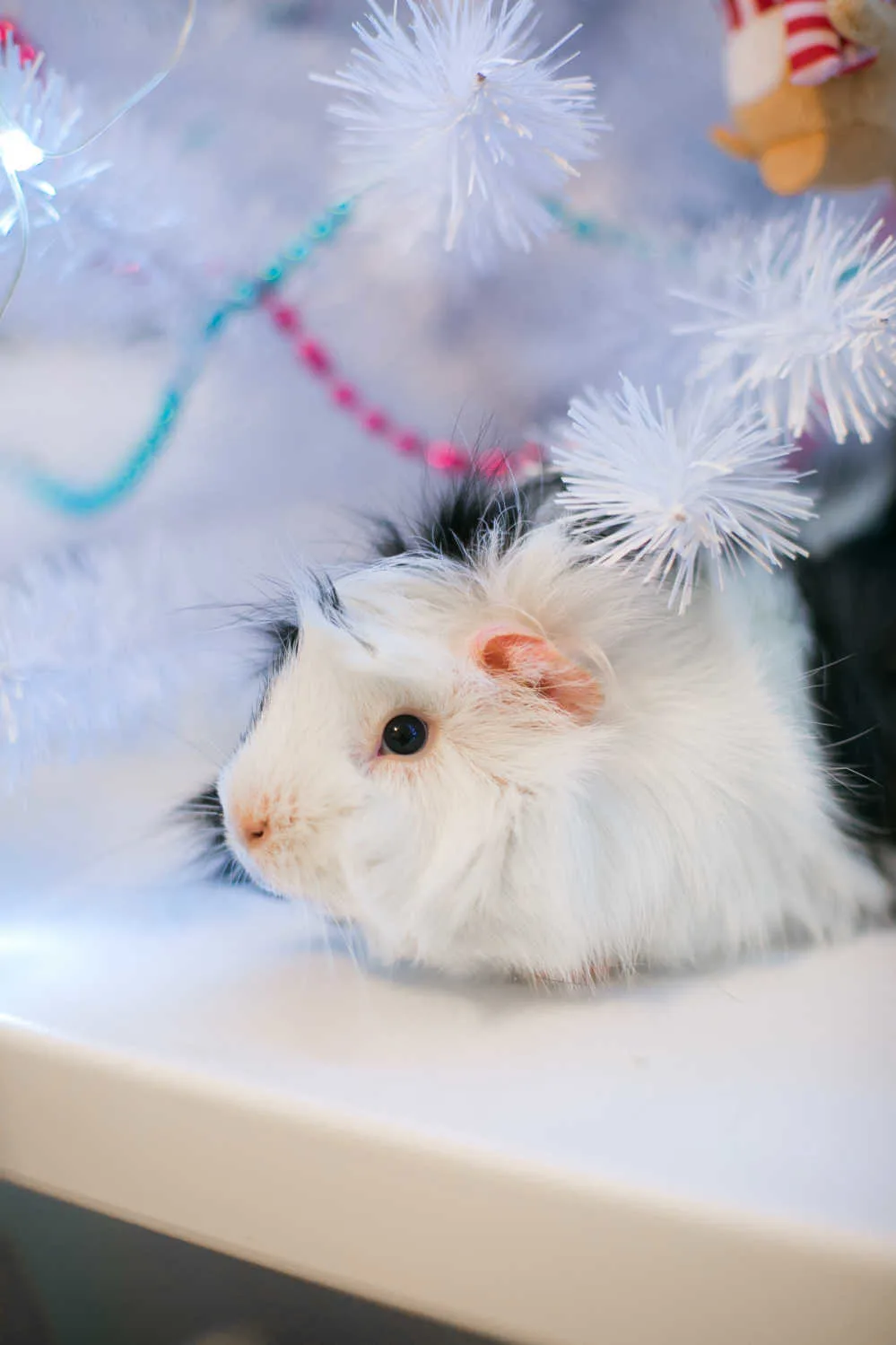
You might think that trying to extend the time between washings is a little icky and you’d rather throw the liners in the wash on a more regular basis for that squeaky-clean smell. But be warned, changing the liners too frequently may trigger your piggy to do some scent marking on the liners because they don’t smell enough.
This means they’ll go to town weeing up a storm in their cage to cover it with their scent and make it smell more like home. If you want to avoid this, you can try changing the fleece bedding in sections instead of all at once. This way, at least one area of the cage always retains their familiar scent and makes them feel comfy and relaxed.
Frequently asked questions about fleece bedding
Still have a few questions? Here are the answers to everything else you need to know about fleece bedding and liners before you commit.
Do guinea pigs like fleece liners?
Yes! Who doesn’t love a comfy bed? And for guinea pigs, it doesn’t get comfier than a nice fluffy fleece. You’ll find them happily snuggling into the fabric, even turning humps into adorable little pillows.
Can you make your own fleece liners?
Absolutely. All it takes is some materials and minimal skill with a sewing machine. There are various materials you can use for the absorbent layer, including mattress protectors, U-Haul blankets, and old towels if you want a reusable liner. Otherwise, for disposable options, you can put puppy pads or newspapers to good use for their excellent absorbent tendencies.
Do I need to put anything underneath fleece liners in the cage?
First-time users will probably be concerned about leaks, especially if they’ve gone with a padded liner that lacks the waterproof bottom. If the absorbent layer is thick enough, that should be sufficient to hold in any wetness.
That being said, if your piggy has a favorite spot to urinate or you don’t change or air the liner frequently enough, leaks can happen. It would never be a massive amount, though — we’re talking only small spots of moisture that could possibly make their way through.
If it happens, don’t stress: it’s nothing a bit of odorless detergent can’t fix (don’t forget to let the cage bottom dry before replacing the liners). If you’re really worried about it, though, placing a towel or some sheets of newspaper below the liner won’t hurt.
How many fleece liners do you need?
Three is a good number of liners to have for one guinea pig in a standard-sized cage, so you have some to keep using in the cage while others are being washed. But ultimately, the number of liners you’ll need depends on how large your cage is. No matter how many you require to line a bigger cage, always buy a few extra, so you have the necessary spares for wash days.
Are fleece liners too hot for summer?
This will depend on what type of fleece material your liner is made up of. Some fleeces are denser and more compact, while others are fluffy and lighter. The snuggly fluffy ones will provide more warmth than the compact ones.
Can you use fleece liners for outside cages?
It’s not recommended as they’ll more often than not become damp and cold.
Why is my guinea pig wet even with a fleece liner?
More than likely, you have a lazy piggy on your hands. If they’re soiling themselves and not moving around much, over time the spot will become wet, and so will they. No reason to panic, though — simply wipe your pet down or give them a gentle bath to get them clean and dry.
You might want to make a plan to wash that particular liner more often, or you can simply put an absorbent pad where they lie a lot and change it frequently.
Final say on how to set up a guinea pig cage with fleece
As it turns out, it’s not that hard to set up fleece bedding in your precious pet’s cage and make it that much more cozy, clean, and hygienic.
Just start a daily habit of removing the little bits of poop, old hay, and apple remnants (wait, can guinea pigs eat apples?), and you’ll find the switch to fleece a breeze. Your piggy’s comfort is worth it, after all.
Steph Dyson is a travel journalist by trade but a lover of all small pets. She’s been a pet mum to everything from gerbils to guinea pigs, rabbits to hamsters, and fish to dogs of all shapes and sizes. She wants to share her years of experience with small pets and make Small Pet Guides the go-to website for pet owners seeking information and care advice.

